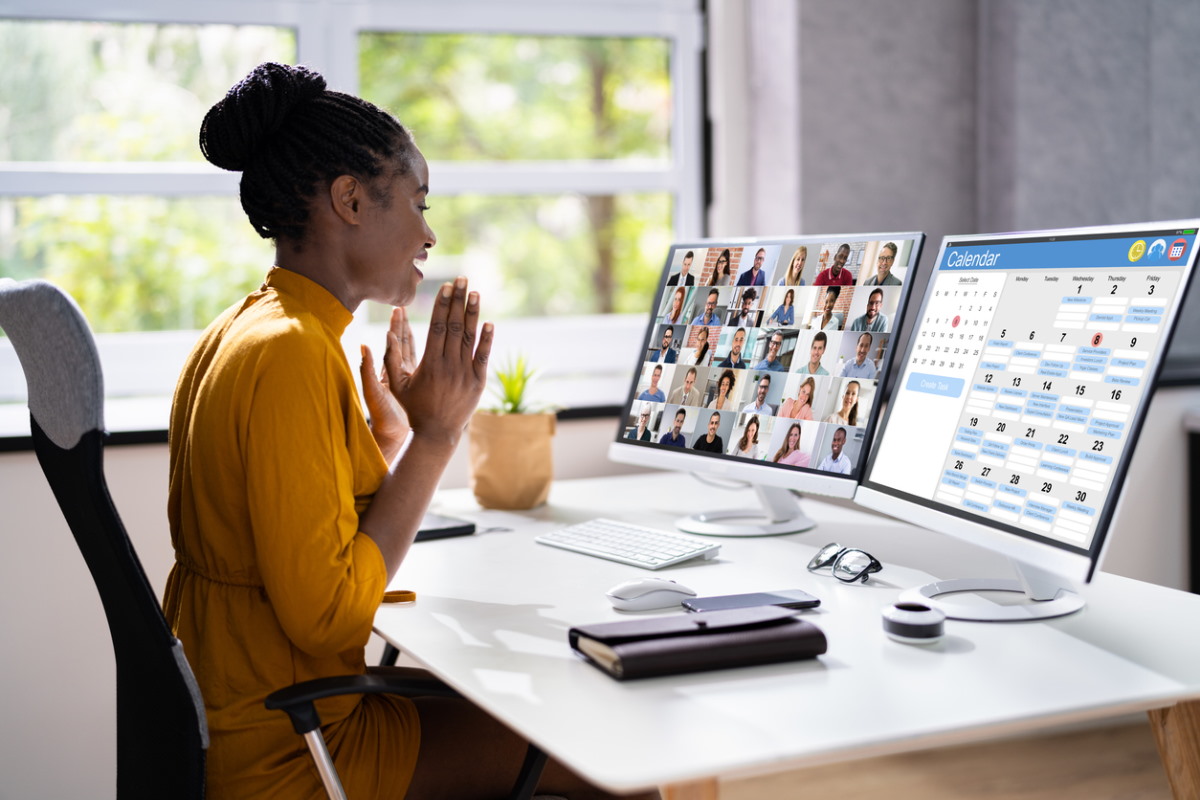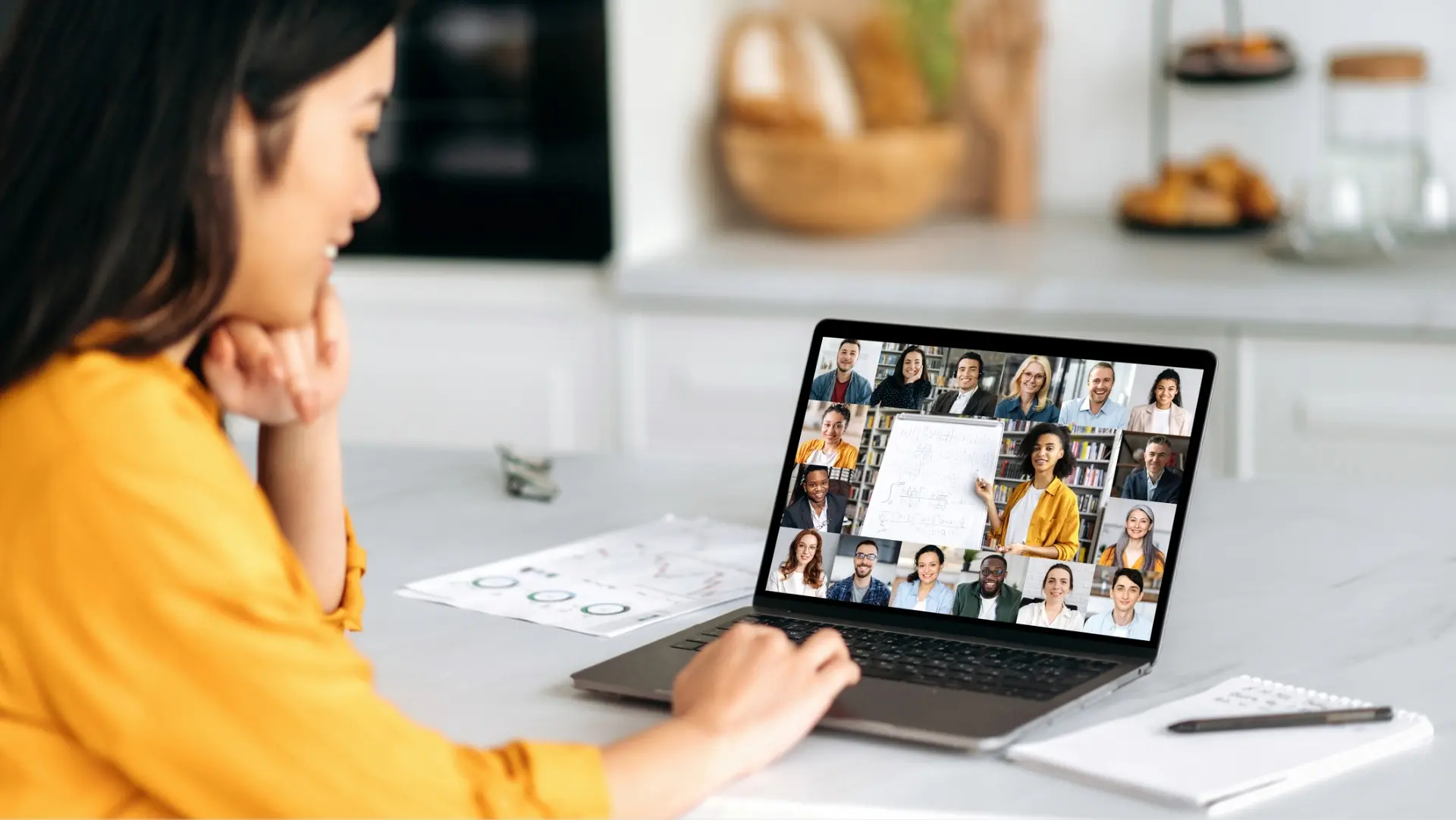Effective Minute-Taking Tips for Online Meetings
During virtual meetings, ideas and discussions often flow rapidly. With so much information being shared, it's essential to take effective meeting minutes to ensure key points are documented. While recordings are useful, manually capturing minutes serves as a focused summary, separating crucial information from extraneous content.
Table of Contents
- Why are meeting minutes important?
- Prepare well for the meeting
- Interrupt when it’s necessary
- Make use of templates
- Take advice and feedback from the chairperson
- Leveraging digital tools for online meetings
- Tips for taking effective online meeting minutes
- Conclusion
Why are meeting minutes important?
Meeting minutes act as a structured reference, highlighting decisions, action points, and key discussions. They provide clarity and accountability, ensuring that participants can revisit key details and track progress on action items. Studies indicate that nearly 30% of meeting content becomes irrelevant over time, making it essential to distil and prioritise the critical points. Accurate minutes allow stakeholders to focus on what truly matters and drive results forward.
According to a McKinsey report, organisations that adopt streamlined meeting practices experience up to a 20% increase in productivity. Another survey by Harvard Business Review found that 71% of managers believe too much time is wasted in ineffective meetings. Clear, concise meeting notes help mitigate this by reducing the need for follow-up meetings and improving communication across teams.
1. Prepare well for the meeting
Preparation is crucial for effective note-taking during online meetings. Familiarise yourself with the agenda and relevant materials beforehand. This enables you to follow discussions more effectively and prioritise key points. Effective preparation not only improves the accuracy of your notes but also enhances your overall understanding of the meeting’s objectives and context.
Key preparation steps include:
-
Reviewing agenda documents: Understand the topics to be discussed, including any supporting materials.
-
Understanding the roles of attendees: Know who will be present, their roles, and their contributions to the agenda.
-
Familiarising yourself with any specialised terminology: Avoid getting lost in technical jargon by researching terms and concepts in advance.
-
Identifying potential challenges: Be aware of issues such as interpreting different accents or coping with varying speech patterns, especially when dealing with a multicultural or international team.
Additionally, consider creating a checklist to organise your preparation process. This might include confirming your access to any required software or ensuring your note-taking setup (e.g., digital templates or tools) is ready to go. Being well-prepared gives you the confidence to capture key moments without disruption.
This groundwork sets the stage for accurate, comprehensive minutes and helps minimise errors or misunderstandings during the meeting.
2. Interrupt when it’s necessary
Taking minutes is not a passive task. The note-taker must engage actively when needed to ensure the accuracy of the records. This includes listening carefully, identifying when clarification is required, and intervening appropriately. If a speaker's point is unclear or inaudible, it’s important to ask for repetition or clarification without hesitation. Effective interventions prevent misunderstandings and ensure that essential points are captured correctly.
For example, if a participant references complex data without details, you might say: "Could you provide a brief summary for the record?"
It’s also beneficial to summarise key points during the meeting, particularly for important decisions or action items. This provides an opportunity for participants to verify the accuracy of the notes in real-time. Active participation helps maintain a collaborative atmosphere, showing that the note-taker is invested in the success of the meeting.
Additionally, partnering with the chairperson to seek clarification on ambiguous topics ensures that all critical content is accurately recorded. Engaging in this way not only improves note-taking but also supports smoother communication for the entire meeting.
3. Make use of templates
Structured templates simplify the process of taking minutes by offering predefined sections for agenda items, action points, and decisions. Templates reduce cognitive load and improve consistency across meetings by providing a clear framework that guides note-takers through each stage of the discussion.
Effective templates typically include the following sections:
-
Meeting title and date: Clearly label the meeting for easy identification.
-
Attendance list: Document who is present to track participation.
-
Agenda items: List each topic and allocate time slots for structured discussions.
-
Decisions and action items: Highlight key takeaways and assign responsibilities.
Using templates ensures uniformity, especially in recurring meetings, which facilitates quick reference and reduces time spent searching for relevant information in past notes.
Popular platforms like Evernote and Notion provide free meeting templates that can be customised to suit your needs (i.e. here's a template for Evernote). Additionally, digital templates can integrate with collaborative platforms, enabling real-time editing and sharing among participants. Adopting a consistent format across meetings improves both short-term efficiency and long-term knowledge management.
4. Take advice and feedback from the chairperson
The chairperson plays a pivotal role in guiding meeting discussions and ensuring the meeting stays on track. Establishing a collaborative relationship with the chairperson is essential for effective note-taking.
Before the meeting, schedule a brief discussion with the chairperson to review the agenda and understand their priorities. This conversation can provide insight into key topics, sensitive issues, or expected decisions that require particular attention. It also allows you to clarify any points that might influence how you document the meeting.
During the meeting, the chairperson often signals when important moments occur, such as key decisions or critical action items. Pay close attention to these cues. If necessary, confirm details with the chairperson in real-time to ensure your notes accurately reflect the discussion.
After the meeting, seek feedback on your notes. This post-meeting review offers an opportunity to refine your technique and align with the chairperson’s expectations for future sessions. This collaborative approach builds trust and demonstrates that you are invested in capturing accurate and actionable minutes.
By establishing open communication with the chairperson, you improve not only the quality of your minutes but also the overall flow and effectiveness of the meeting itself.
Leveraging digital tools for online meetings
Digital tools can significantly enhance your efficiency when taking online meeting minutes. Features such as screen sharing, recording, and real-time collaboration tools streamline the process.
Digital Samba, a leading GDPR-compliant video conferencing provider, offers a robust API and SDK designed to optimise virtual meetings. Here’s how Digital Samba can assist:
-
Screen sharing: View presentations and shared documents in real-time.
-
Recording capabilities: Review meeting content to ensure completeness and accuracy.
-
High-definition video: Maintain clarity, reducing misunderstandings.
By embedding Digital Samba’s video conferencing API into your platform, you can offer seamless, secure online meetings under your own branding.
Tips for taking effective online meeting minutes
-
Focus on key points: Capture only the essential decisions, action items, and deadlines. Avoid overwhelming your notes with irrelevant details.
-
Example: Instead of recording lengthy discussions, summarise key conclusions.
-
-
Use shorthand: Develop a personalised system of abbreviations to write faster without missing crucial points. Commonly used shorthand symbols can include "&" for "and" or "->" for indicating outcomes.
-
Example: "Proj & budget approved -> next steps assigned to J. Doe."
-
-
Time-stamp notes: Mark specific moments during recordings to provide a reference for later review. This is especially useful for complex meetings where participants might need to revisit certain sections.
-
Example: Include timestamps such as "[12:15] Discussed budget allocation for Q2."
-
-
Highlight follow-ups: Use bold or coloured text to identify tasks that require further action, helping stakeholders easily prioritise what needs immediate attention.
-
Example: "Action: Send project updates by Friday."
-
Organising your notes in this manner ensures that they remain clear, actionable, and easy to reference for all stakeholders.
FAQs
To take effective minutes, prepare by reviewing the agenda, use a structured template, focus on key points, and intervene for clarification if needed. Digital tools can also enhance your process.
Include the meeting title, date, attendance list, agenda items, decisions made, action items, and any follow-ups required. Summarise discussions rather than recording them verbatim.
Meeting minutes are a formal, summarised record of key points, decisions, and action items, while meeting notes can be less structured and serve as informal reminders.
Actively participate by seeking clarification during the meeting and summarising key points in real-time. Post-meeting feedback from the chairperson can also help improve accuracy.
Yes, platforms like Digital Samba offer features like screen sharing, real-time collaboration, and recording to support accurate and efficient minute-taking.
Recordings are time-consuming to review, whereas minutes provide a concise and actionable summary. They help participants quickly reference key points and decisions.
Conclusion
Boost your online meetings with Digital Samba’s cutting-edge video conferencing solution. Our API and SDK empower you to seamlessly integrate high-quality, secure video communication into your digital platforms, ensuring a smoother, more productive virtual collaboration. Designed with GDPR compliance and EU-based hosting, Digital Samba guarantees robust data privacy and performance that you can trust.
Explore how our solutions can enhance your business communication. Whether you need embedded video calls, screen sharing, or real-time collaboration, we provide the tools to keep your team connected and efficient.
Photo by Jacob Lund from Noun Project
Share this
You May Also Like
These Related Stories

Essential Features for Business Meeting Software in 2025

15 Virtual Meeting Best Practices for Better Online Collaboration

